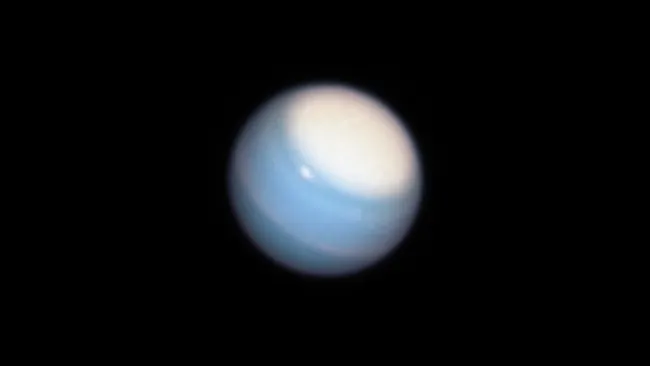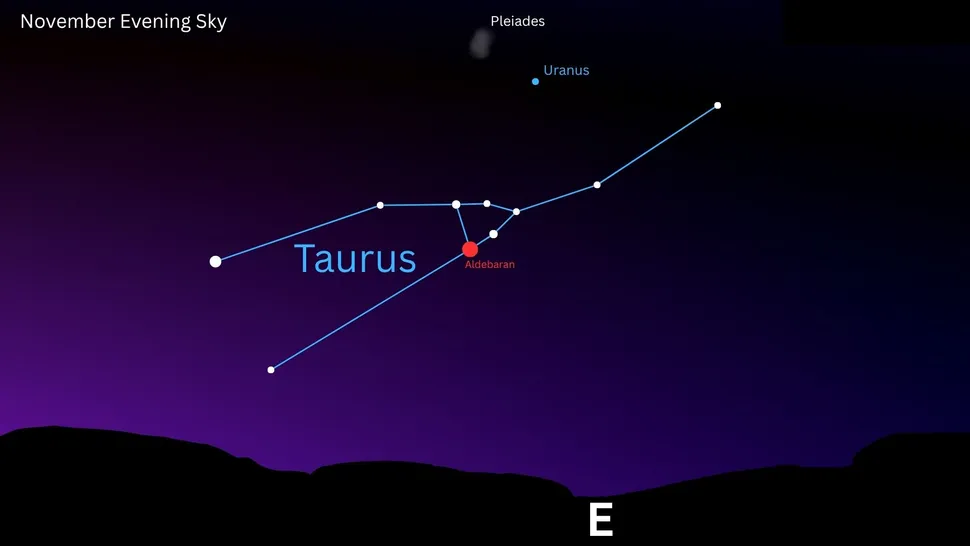
Posted on 11/20/2025 11:27:13 AM PST by Red Badger

The ice giant Uranus is pictured shining against the blackness of space. Its blue surface is marked by lighter clouds and an equatorial band, while a large pale cloud hovers over its polar region. A Hubble Space Telescope view of Uranus captured in February 2019 (Image credit: NASA, ESA, and A. Simon (NASA Goddard Space Flight Center), and M. Wong and A. Hsu (University of California, Berkeley))
=============================================================
November is the best month of 2025 to catch a glimpse of the distant ice giant Uranus as it shines at opposition, though you'll still need a telescope if you hope to spot the elusive planet hiding among the stars of the constellation Taurus.
Uranus will reach opposition at 7:17 a.m. EST (1217 GMT) on Nov. 21, when it will be positioned opposite the sun in Earth's sky. according to the astronomy website In-the-sky.org. The weeks surrounding opposition present a perfect opportunity to hunt for the distant ice giant as it stays visible from dusk to dawn in the Autumn night sky.
The ice giant shines with an apparent brightness — or magnitude — of +5.6 around the time of opposition, which means that it's technically possible to spot it with the naked eye under perfect dark sky conditions. (On the magnitude scale used by astronomers, lower numbers signify brighter objects). For example, at its brightest, the planet Venus shines with a magnitude of about -4.6.) However, a pair of binoculars or ideally a backyard telescope with an aperture of 8 inches (200mm) or more will make spotting the ancient world a whole lot easier.
How to find Uranus
Look to the east in the hours following sunset on Nov. 21 to find the stars of the constellation Taurus shining low on the horizon, with the combined light of the Pleiades open star cluster glowing roughly 10 degrees, or the width of your clenched fist held at arm's length, above it.

A finder chart showing the location of Uranus close to the Pleiades on Nov. 21. (Image credit: Made by Anthony Wood in Canva) Uranus can be found in a patch of sky less than 5 degrees to the lower right of the Pleiades, appearing as a tiny aqua dot against the blackness of space. Whilst this may seem underwhelming at first glance, it's important to remember exactly what you're looking at — a world 1.72 billion miles (2.77 billion km) from Earth, four times the size of our blue marble, which has only been visited by a single spacecraft in the history of our species.
Hoping to catch a glimpse of Uranus in November? Then check out our roundups of the best telescopes, binoculars and smart telescopes available for purchase in 2025. If astrophotography is your passion then be sure to read our guides to the best cameras and lenses for capturing the night sky to ensure that you're ready to immortalize the next big stargazing event!
Dear FRiends,
We need your continuing support to keep FR funded. Your donations are our sole source of funding. No sugar daddies, no advertisers, no paid memberships, no commercial sales, no gimmicks, no tax subsidies. No spam, no pop-ups, no ad trackers.
If you enjoy using FR and agree it's a worthwhile endeavor, please consider making a contribution today:
Click here: to donate by Credit Card
Or here: to donate by PayPal
Or by mail to: Free Republic, LLC - PO Box 9771 - Fresno, CA 93794
Thank you very much and God bless you,
Jim
I’ll remember that one for my colonoscopy next month.😁
I’m not going to bump this thread. I’m not going to bump this thread. I’m not going to bump this thread.
I have an app on my phone that will help me find Uranus.
Some people can’t find Uranus with both hands and a road map. That’s right, I said it.
😁🙄😎.........................
Porn Hub?....................
Lol....no. Sky View.
Disclaimer: Opinions posted on Free Republic are those of the individual posters and do not necessarily represent the opinion of Free Republic or its management. All materials posted herein are protected by copyright law and the exemption for fair use of copyrighted works.